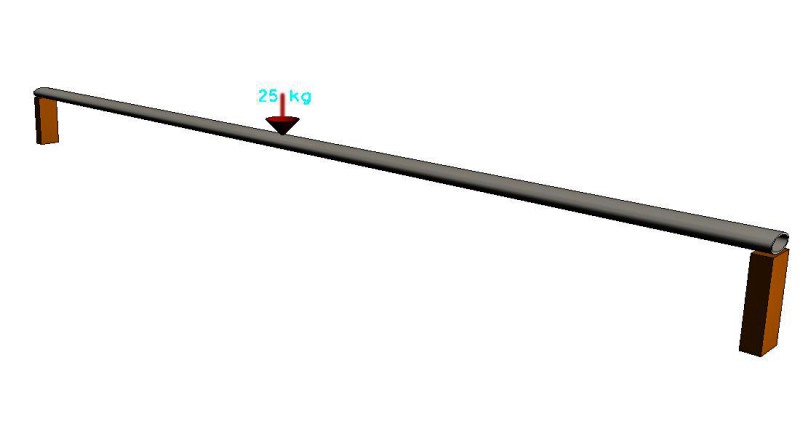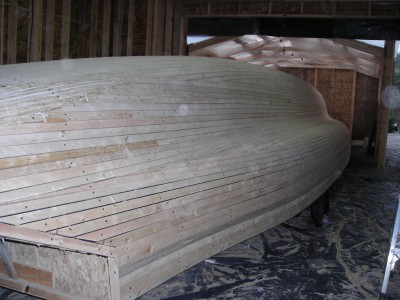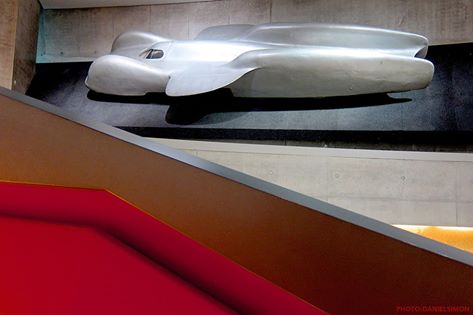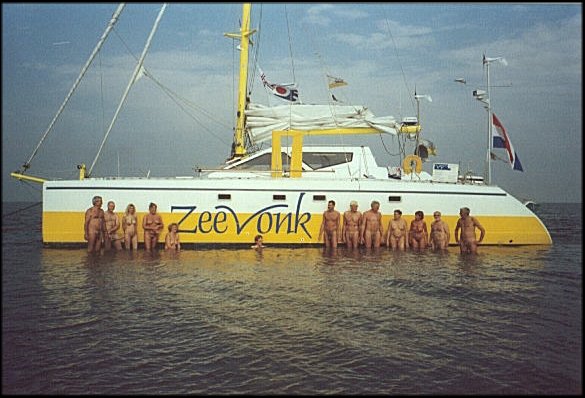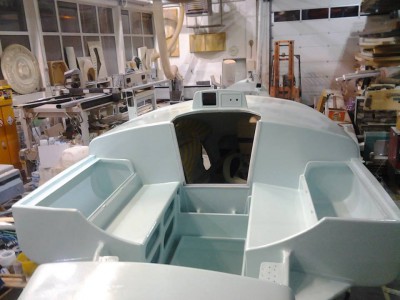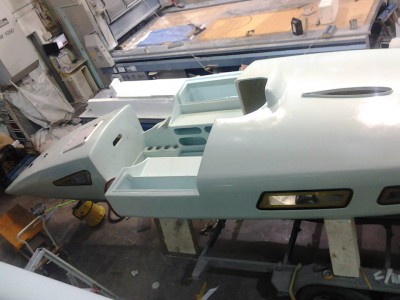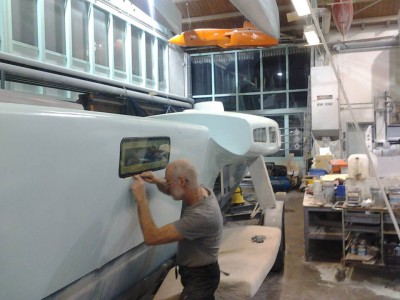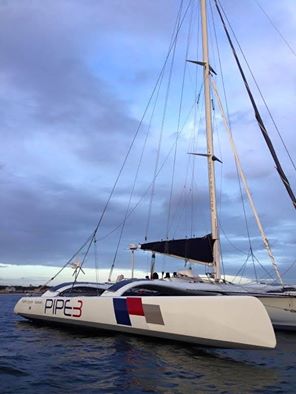Dr. Rennie’s GoPro and drone caught this beautiful scenery. My 64′ daycharter cat out of Kauai, at Niihau
Category Archives: New Designs
Comments Basket
I have an armload of short observations.
First, the Bieker proa I saw under construction, and noted how odd it looked? It was only the aft or forward half of the proa. I see online it has its other reflected half added. No idea why that was done, building a front and back half apart. Global loads and all.
Still no word on Forespar forensics on the Sarabi mast.
People seem to think lifting foils are something new and cutting edge. No. Recall my picture here earlier of my friend Howard Apollonio on his foiler in the 60s. What is different is the astonishing wealth spread has let many more multi sailors make carbon fiber boats. Not every boat can get up on a foil. Carbon makes a multi light enough to be a possible lifter. Also, like politics, one snappy picture or scrap of video does not make it always that way. Here in the Northwest there are kelp beds everywhere. Tough to foil through those.
Prices on my USCG certified designs will probably have to go up considerably. I used to rail about the USCG amnesia way back in the 90s. It seems to be back. I have certified some 50 cats to ABS ORY. With the most recent submittal I was asked why I chose to use that Guide…. We could be going back to the days of a designers main job being running an unpaid Berlitz school for coasties.
Mast Scantlings-Hacking Eulers
Composite masts can be more difficult to determine how much laminate is needed. In just the last couple of months recall the Gunboat mast giving way and the Sarabi mast mystery. On an alloy mast you can be quite sure of both the modulus of the alloy and the section properties. On your self-built composite mast both the actual section properties and the actual performance of your layups might not be easily quantifiable. What to do? Borrow an alloy mast.
Actually, borrow a successful alloy mast from the same size/weight of multi. There are probably quite a few around, including your own earlier mast maybe. Remove the diamonds and set it up on blocks at each end. Put a certain weight exactly at the midpoint between the blocks. Measure the deflection and record it.
When you have your composite mast, set it up the same way exactly. If the new one is longer, let it run over the ends, just so the blocks are the same distance apart. It will basically be a pin connection in both cases, so is close enough. Add the exact same weight and measure the deflection. If your deflection is greater, you can add more carbon until it matches or even exceeds the alloy data. This way you don’t even need to know your exact carbon modulus. I use 25 kg only as an example. Use enough weight to give visible deflection.
John’s Main Hull
Not Really a Catamaran
From one of my favorite space machine designers, Daniel Simon. Not a cat, but at first glance…
“1937-39 Mercedes T80
With a 44.5 liter V12 engine, 3000hp, Ferdinand Porsche design, and a speed record target at 750km/h ( 470 mph ), this 6-wheeled monster was developed to beat existing British and American records of the time – on a German Autobahn. It never happened. “
Zeevonk Sold
Diab has new website
I see that Diab (the pvc foam core people) has a new website. http://www.diabgroup.com/
More Geko Pics
John Marples on Synthetic Rigging.
Nice article by John Marples in the last ProBoat issue.
